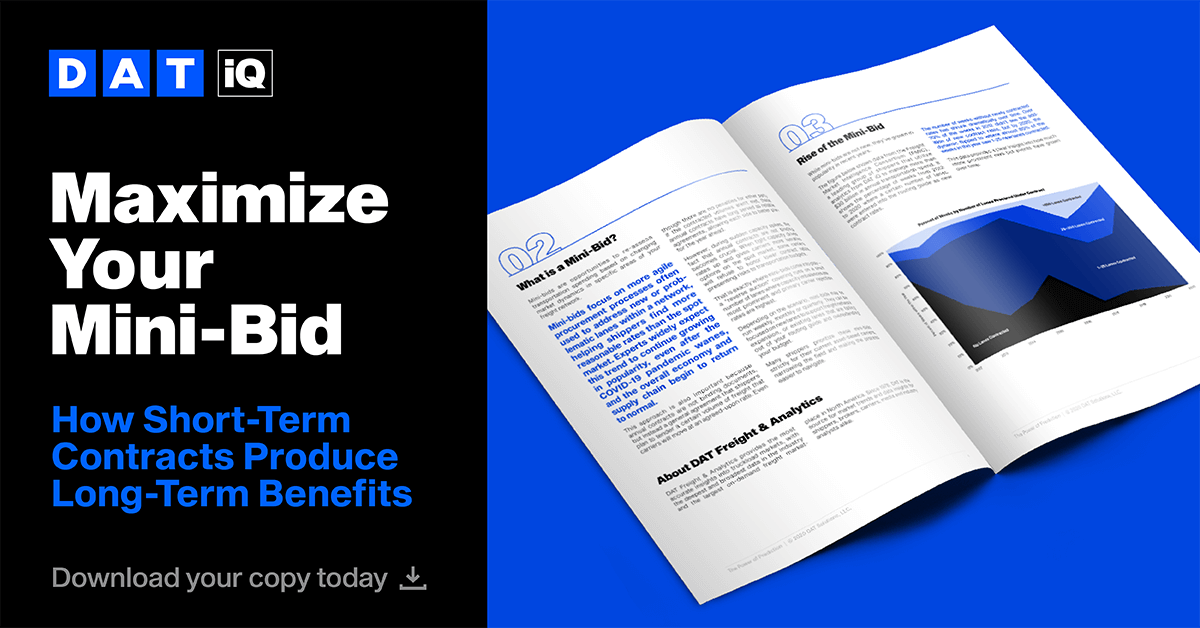While annual bid events are still one of the primary ways companies go about procuring transportation, many are turning to shorter, more targeted “mini-bids” as a way to shore up problematic lanes within their networks.
While the adoption of mini-bids has grown, there is still reluctance on the part of some transportation and supply chain teams. For some, there’s the fear that the approach will require too many resources and take too much time, especially since annual procurement events are already such a heavy lift.
But when employed effectively, the shorter time frame involved in mini-bids reduces the need to forecast far in advance, thus reducing the time required to prepare.
Without in-depth knowledge on market rates for specific lanes to inform your mini-bids, you may miss out on opportunities to contain costs and maximize transportation budgets.
For example, a mini-bid could look compelling at a particular moment in time, but if rates on your problematic lanes are predicted to quickly normalize, the benefits of the mini-bid may be short-lived and fail to outweigh the costs involved in conducting the mini-bid. Access to the right insights and trends may indicate that holding off several additional weeks will present an even more inviting environment for a shipper.
Learn more about dynamic procurement strategies in our eBook, “Maximize Your Mini-Bid.”


